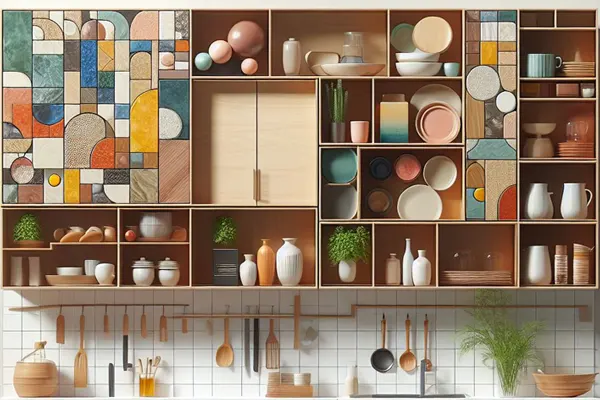Efficient and organized kitchen storage is pivotal for a functional culinary space. The role of kitchen storage cabinets transcends mere storage; they are organizational hubs that ensure a streamlined and efficient cooking environment. These cabinets not only house various cooking essentials but also contribute significantly to the overall efficiency of the kitchen.
Importance of Organized Storage
Organized storage minimizes clutter, allowing for easy access to tools, utensils, and ingredients. It creates a conducive environment where one can effortlessly navigate the kitchen, enhancing productivity and enjoyment in culinary pursuits.
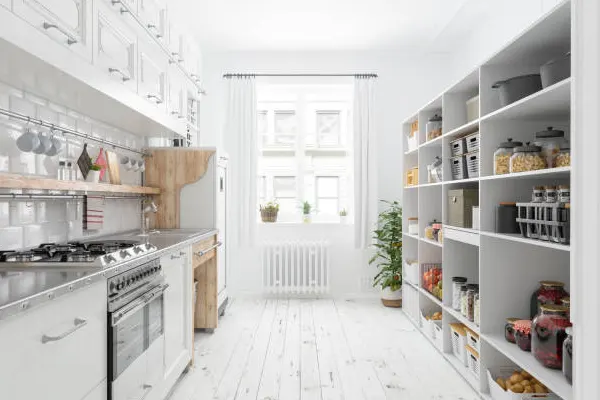
Role of Cabinets in Kitchen Efficiency
Cabinets serve as the backbone of a well-organized kitchen. They optimize available space, provide convenient access to items, and contribute to the seamless flow of culinary activities.
Benefits of Organized Kitchen Storage
Enhancing Efficiency in the Kitchen
A well-organized kitchen translates to a seamless cooking experience. When items are easily accessible and properly stored, it expedites cooking processes and reduces time spent searching for tools or ingredients.
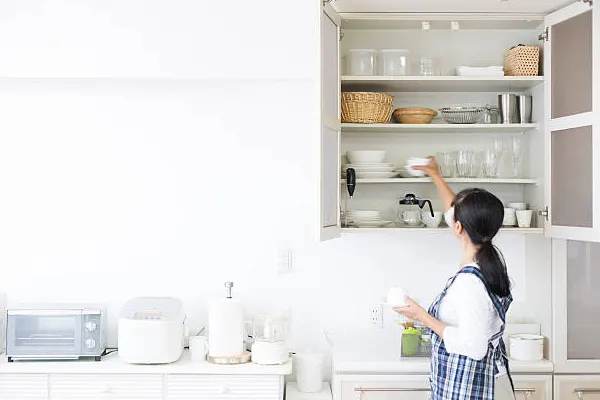
- Seamless Cooking Experience
Imagine a kitchen where every utensil, spice, and ingredient has its designated place. This level of organization transforms cooking into a smooth and enjoyable process. When cooking essentials are easily accessible and neatly arranged, it eliminates the frustrating hunt for items and allows cooks to focus solely on the culinary creation at hand. - Reduced Time and Effort
The convenience of having everything in its place significantly reduces the time spent searching for tools or ingredients. It minimizes interruptions during cooking, enabling a more efficient workflow. Cooks can whip up meals more swiftly and with greater ease, fostering a sense of accomplishment and satisfaction. - Optimized Cooking Processes
An organized kitchen layout facilitates a systematic approach to cooking. With items arranged strategically, from prep tools to cooking implements, it promotes a natural flow in the cooking process. This optimization results in smoother transitions between different cooking stages, ensuring a more harmonious and efficient experience. - Inspires Creativity
A clutter-free and organized kitchen environment encourages creativity. When cooks don’t have to struggle with disorganization, they can devote more mental energy to experimenting with recipes, trying new techniques, and creating culinary masterpieces without constraints.
Easy Access to Cooking Essentials
By categorizing and storing items efficiently, kitchen cabinets enable easy access to essentials, fostering a hassle-free cooking environment. This accessibility streamlines cooking activities and promotes a stress-free experience in the kitchen.
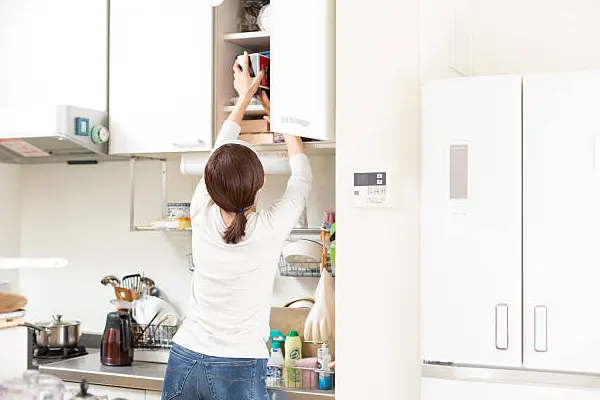
- Efficient Categorization and Storage
Organizing kitchen items in cabinets based on categories such as utensils, spices, dry goods, or cookware ensures quick and easy access. By having designated spaces for each category, it minimizes the time spent searching for specific items during meal preparation. - Streamlined Cooking Activities
When essential items are readily accessible, it streamlines cooking activities. Cooks can effortlessly retrieve what they need, maintaining a smooth rhythm throughout the cooking process. This accessibility not only saves time but also reduces the stress often associated with a disorganized kitchen. - Promotion of a Stress-Free Environment
Easy access to cooking essentials fosters a stress-free cooking environment. It eliminates the frustration of rummaging through cluttered cabinets, allowing cooks to focus on the joy of cooking rather than grappling with disorganization.
Maximizing Space Utilization
Optimizing available space is crucial in a kitchen. Different types of cabinets cater to diverse needs, ensuring that every nook and corner is utilized effectively, whether through wall-mounted cabinets, base cabinets, or tall cabinets.
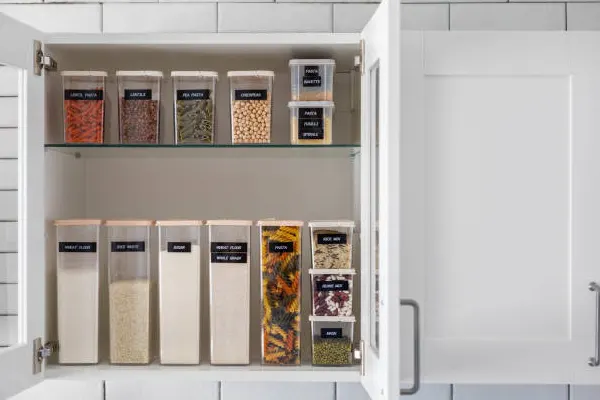
- Optimal Use of Available Space
Efficient kitchen cabinets make the most out of available space. Different types of cabinets be they wall-mounted, base, or tall cabinets serve diverse needs and ensure that every inch of space is utilized effectively. Wall-mounted cabinets efficiently use vertical space, while base cabinets accommodate larger items, maximizing storage capacity. - Tailored Storage Solutions
Each cabinet type offers tailored storage solutions. Wall-mounted cabinets are perfect for smaller items, while base cabinets cater to larger items. Tall cabinets utilize floor-to-ceiling space, providing ample room for various items, optimizing vertical storage, and ensuring no space goes to waste. - Enhanced Organization and Aesthetics
By utilizing various types of cabinets effectively, the kitchen not only becomes more organized but also aesthetically pleasing. Optimized space utilization minimizes clutter, creating a visually appealing and functional culinary space.
Types of Kitchen Storage Cabinets
Wall-Mounted Cabinets
Designed to optimize vertical space, these cabinets are ideal for storing lightweight items such as spices, jars, or decorative pieces. They efficiently utilize wall space while keeping essentials within reach.
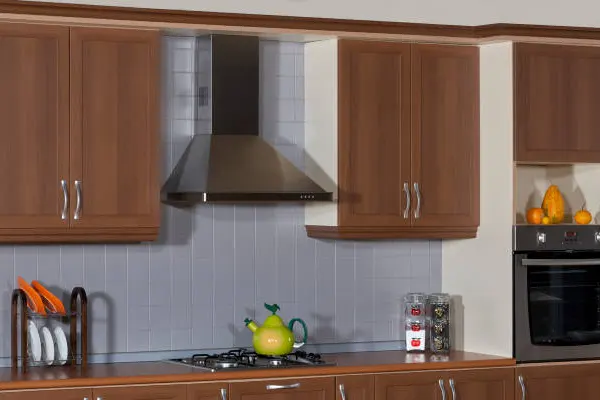
Wall-mounted cabinets are tailored to utilize vertical space efficiently. They’re perfect for storing lightweight items like spices, herbs, jars, or decorative pieces. By utilizing wall space, these cabinets keep essentials within easy reach while freeing up valuable countertop or floor space.
Placed at eye level or higher, these cabinets provide convenient access to commonly used items. Their strategic positioning ensures easy retrieval of frequently needed ingredients or kitchen tools, contributing to a smoother cooking experience.
Apart from their practicality, wall-mounted cabinets contribute to the visual appeal of the kitchen. They serve as both functional storage units and decorative elements, showcasing culinary essentials while adding character to the kitchen decor.
Base Cabinets
Known for their sturdiness and functionality, base cabinets accommodate larger items like pots, pans, and kitchen appliances. These cabinets often feature shelves or pull-out drawers for convenient storage.
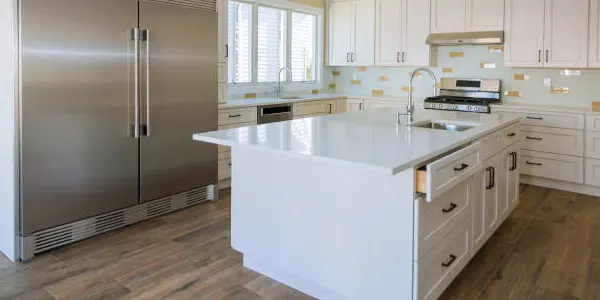
Base cabinets are renowned for their sturdiness and functionality. Designed to accommodate larger and heavier items such as pots, pans, and kitchen appliances, these cabinets provide robust storage solutions. They often feature shelves or pull-out drawers, facilitating organized and convenient storage.
The layout of base cabinets ensures easy access to heavier items, eliminating the need for lifting or reaching to retrieve kitchen essentials. The incorporation of pull-out drawers enhances accessibility, allowing for efficient organization and retrieval of items.
Tall Cabinets
Tall cabinets utilize floor-to-ceiling space, providing vertical storage advantages. They accommodate various items, from brooms and mops to food supplies and baking trays, maximizing available vertical space.

Tall cabinets capitalize on floor-to-ceiling space, offering unparalleled vertical storage advantages. They cater to a wide range of items, from cleaning supplies like brooms and mops to bulkier kitchen necessities like food supplies and baking trays.
By maximizing available vertical space, tall cabinets effectively utilize every inch of the kitchen. Their height allows for increased storage capacity without compromising floor space, making them ideal for optimizing storage in compact kitchens.
Tall cabinets offer diverse storage opportunities, accommodating a variety of items in an organized manner. Their spacious interiors can be customized with shelves, racks, or dividers, providing a tailored storage solution for different kitchen necessities.
Factors to Consider When Choosing a Kitchen Storage Cabinet
Space Availability
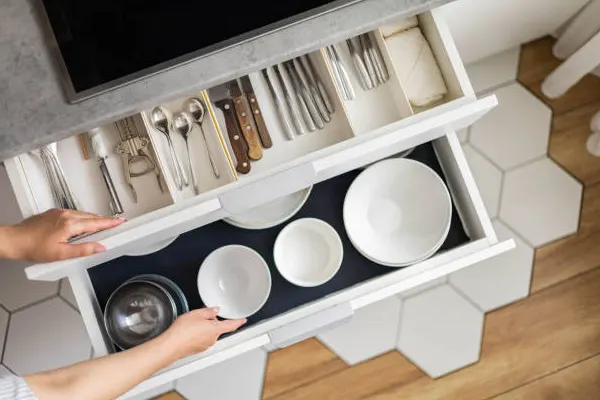
Evaluating kitchen layout is essential when selecting cabinets. Understanding available space helps in optimizing storage potential, ensuring efficient utilization without overcrowding the area.
Design and Style
Balancing aesthetics and functionality is crucial. Cabinets should complement the kitchen decor while meeting storage needs, enhancing both visual appeal and practicality.
Functionality and Accessibility
Choosing cabinets with features that facilitate easy access, such as pull-out shelves or smart organizers, contributes to a user-friendly kitchen environment. Prioritizing accessibility enhances the overall kitchen experience.
Innovative Features in Modern Kitchen Storage Cabinets
Pull-Out Shelves and Mechanisms
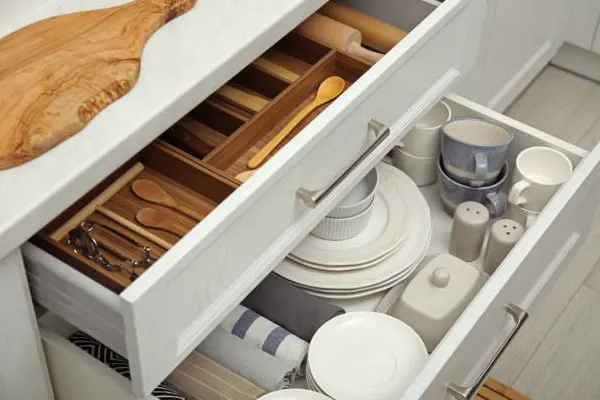
Modern cabinets come equipped with pull-out shelves and mechanisms that enhance accessibility. These innovative features make reaching items at the back of cabinets effortless and improve overall usability.
Space-Saving Mechanisms
Maximize storage capacity with innovative space-saving mechanisms. Utilize features like lazy Susans, sliding racks, or corner cabinets to efficiently use every inch of cabinet space.
Tips for Organizing Kitchen Cabinets
Categorizing Items
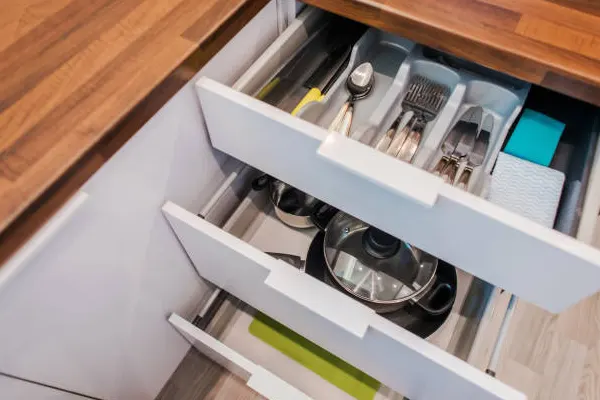
Organize items based on frequency of use. Categorizing and grouping similar items together minimizes clutter and ensures easy access to essentials during cooking.
Utilizing Space-Saving Solutions
Customize storage with dividers, racks, or stackable containers to make the most of available space. Utilizing these solutions optimizes storage while keeping the kitchen tidy.
Regular Maintenance
Regularly declutter and clean cabinets to maintain organization and cleanliness. Routine maintenance ensures longevity and preserves the functionality of storage solutions.
DIY Ideas for Upgrading Kitchen Storage
Adding Functional Elements
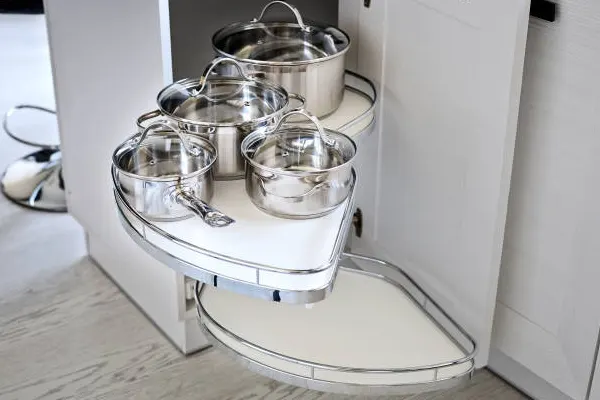
Consider installing pull-out shelves or customizing drawers with dividers to improve functionality. Utilize door space with organizers for spices or utensils, enhancing accessibility.
Sustainability and Eco-Friendly Options in Kitchen Storage
Eco-Friendly Materials

Explore sustainable choices for cabinets such as bamboo, reclaimed wood, or recycled materials. Opting for eco-friendly materials contributes to a greener kitchen space.
Importance of Proper Maintenance for Longevity
Preserving Cabinet Quality

Regular upkeep is crucial for maintaining the durability and aesthetics of cabinets. Proper maintenance ensures cabinets retain their functionality and visual appeal over time.
- Regular Cleaning Regimen
Routine cleaning is essential to maintain the visual appeal of cabinets. Using appropriate cleaning agents, gentle detergents, or wood-specific cleaners helps remove dust, grease, or stains without damaging the cabinet’s surface. - Inspection and Repair
Periodically inspect cabinets for any signs of damage, such as loose hinges, worn-out surfaces, or water damage. Prompt repairs prevent minor issues from escalating and ensure that the cabinets function optimally. - Avoiding Harsh Cleaners
Harsh chemicals or abrasive cleaners can damage the cabinet’s finish or material. Opt for mild cleaning solutions and soft, non-abrasive cloths to preserve the cabinet’s integrity while effectively removing dirt or stains. - Protection from Environmental Factors
Cabinets can be sensitive to environmental elements. Protect them from excessive moisture, direct sunlight, or extreme temperature fluctuations to prevent warping, discoloration, or damage to the cabinet’s structure. - Regular Polishing or Treatment
For wooden cabinets, periodic polishing or treatment with appropriate wood oils or finishes can enhance their durability and maintain their natural beauty.
Ensuring Long-Term Functionality
Proper maintenance isn’t just about aesthetics; it’s about ensuring the cabinets remain fully functional over time. By implementing regular cleaning, inspections, and timely repairs, cabinets retain their functionality, ensuring smooth operation of doors, drawers, and hinges.
In essence, dedicating time and effort to the proper care and maintenance of kitchen cabinets is essential for preserving their quality, durability, and aesthetic appeal. It’s an investment in prolonging the lifespan and ensuring the cabinets continue to enhance the functionality and beauty of the kitchen.
Conclusion
Summary of Kitchen Storage Cabinet Importance
In conclusion, kitchen storage cabinets serve as organizational cornerstones. Understanding their types, features, and maintenance is key to revolutionizing kitchen experiences. Efficient and organized storage not only enhances efficiency but also adds to the overall joy of cooking and using the kitchen space.
FAQs
- What materials are best for sustainable kitchen cabinets?
Sustainable materials such as bamboo, reclaimed wood, or recycled materials are excellent choices for eco-friendly kitchen cabinets. These materials not only contribute to a greener environment but also offer durability and aesthetic appeal. - How often should I declutter my kitchen cabinets?
Aim for a regular quarterly decluttering session to maintain organization and cleanliness. This practice ensures that your kitchen remains tidy and items are easily accessible. - Can I customize my existing cabinets for better storage?
Yes, there are various DIY options available to upgrade existing cabinets. You can install additional shelves, customize drawers with dividers, or utilize door space with organizers to enhance functionality and storage capacity. - Are pull-out shelves worth the investment in kitchen cabinets?
Absolutely! Pull-out shelves significantly improve accessibility, making it easier to reach items stored at the back of the cabinet. They enhance convenience and usability in the kitchen. - How do I maintain wooden cabinets for longevity?
Use mild detergents for cleaning and avoid abrasive cleaners that can damage the wood. Regularly wipe down the cabinets and perform maintenance to preserve their beauty and functionality over time.
